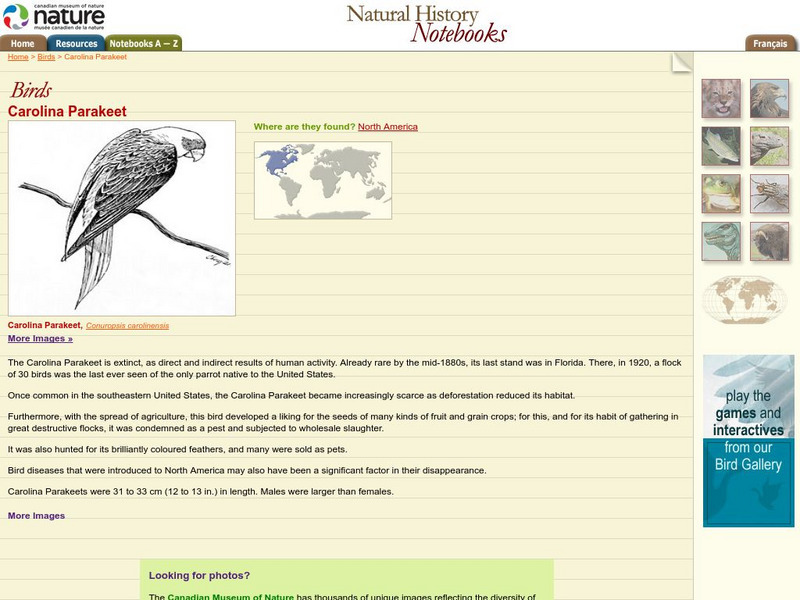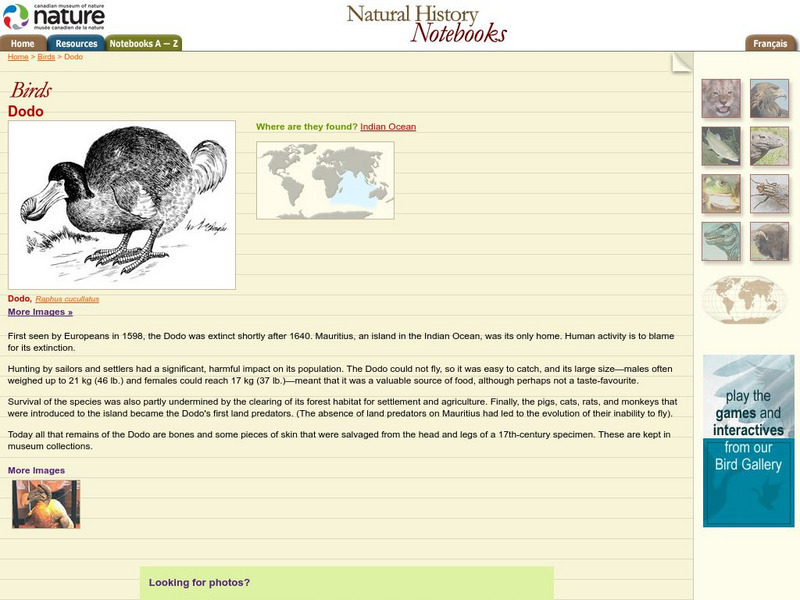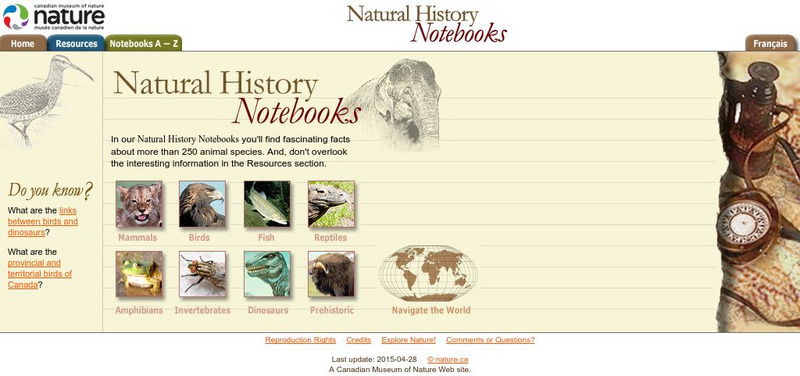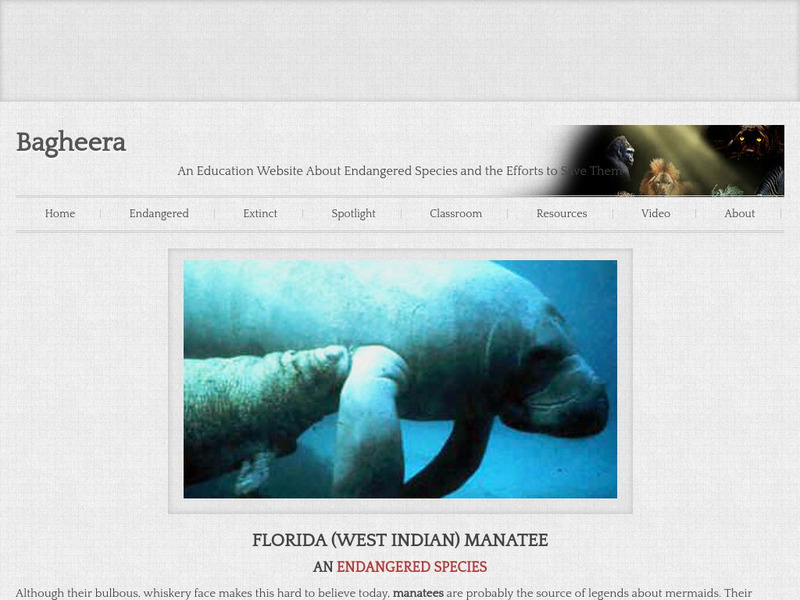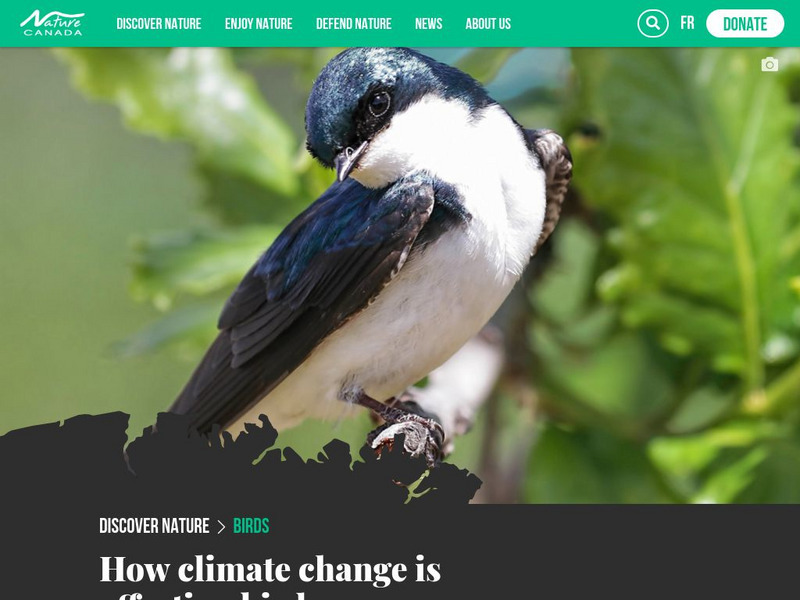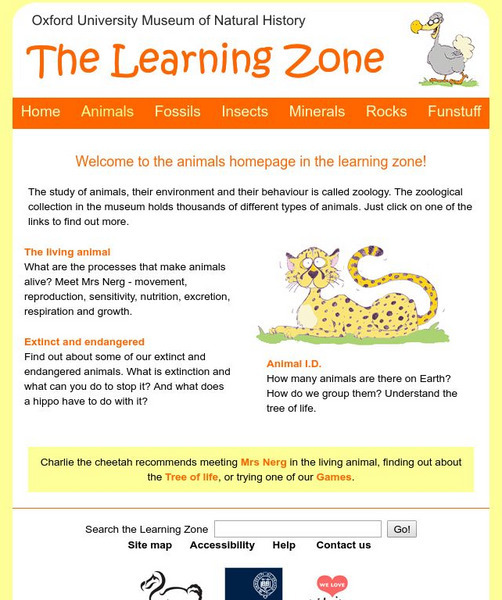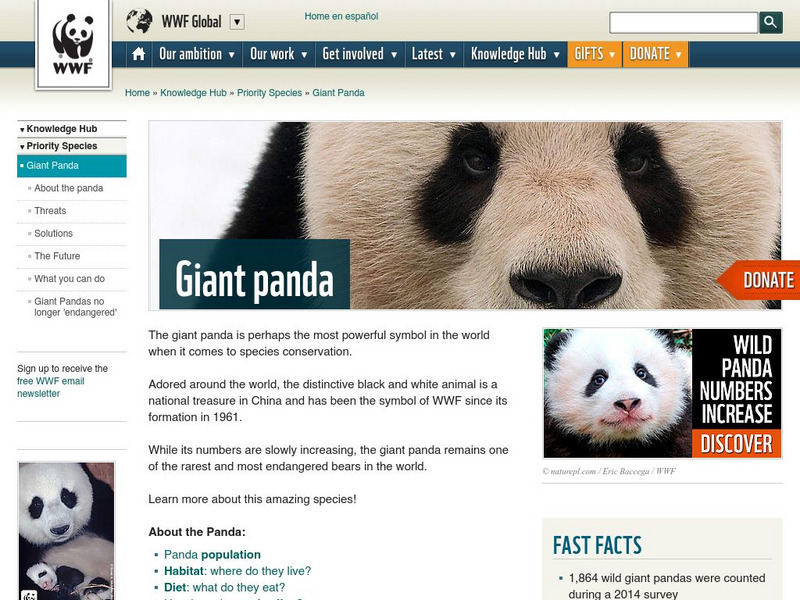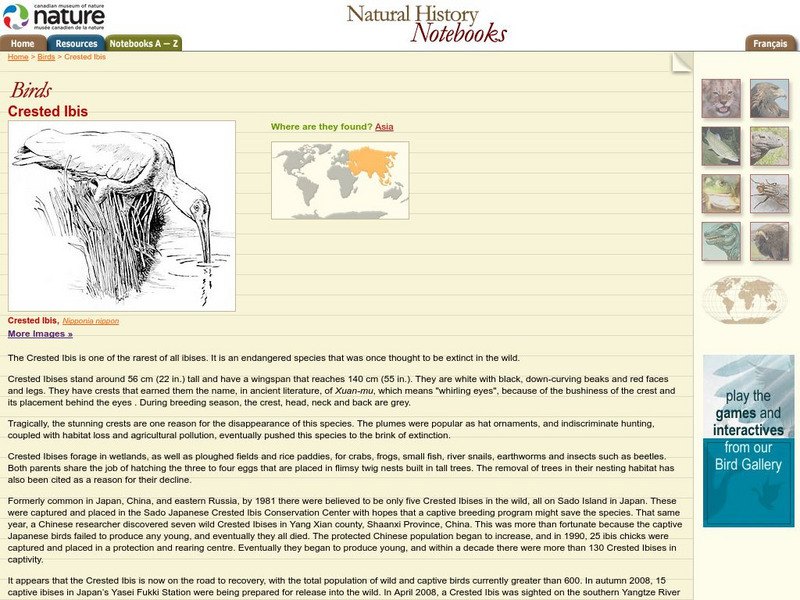Canadian Museum of Nature
Canadian Museum of Nature: Carolina Parakeet
The Carolina parakeet was once found in the southern United States but is now extinct. The reasons are explained here and you can see a drawing of this lost bird.
Canadian Museum of Nature
Canadian Museum of Nature: Dodo
The Dodo became extinct shortly after 1640 and all that remains of them today are bones and some pieces of skin. Provided is a brief description of their location, characteristics and predators.
PBS
Pbs Learning Media: How Disruptions Affect Animal Populations
Learners explore the effects that ecosystem disruptions can have on animal populations. They learn about the disruptions that have driven three species-the Madagascar fish eagle, the Iberian lynx, and the rowi kiwi, to the brink of...
OneWorld UK
One World: Stop Life in Danger
Elementary students will appreciate the cartoon style fact clips as the evolution of life on earth is laid out. Diversity, survival of the fittest, and ideas to help the environment are all included. An entertaining site for younger...
CK-12 Foundation
Ck 12: Biology: Competition
[Free Registration/Login may be required to access all resource tools.] Describes how interspecific competition affects extinction and specialization.
Canadian Museum of Nature
Canadian Museum of Nature: Natural History Notebooks
This site from the Canadian Museum of Nature, a natural history museum, provides short information blurbs and fun facts on over 240 different common animals categorized by type (mammals, fish, reptiles, invertebrates, amphibians,...
Other
The Cheetahspot
The title says it all. The ultimate site to find out everything you need to know about cheetahs. Content includes information on Cheetah social behavior, diet, appearance, locomotion, vocals, habitat, history, and more.
CK-12 Foundation
Ck 12: Life Science: Types of Mollusks
[Free Registration/Login may be required to access all resource tools.] There are approximately 160,000 living species and probably 70,000 extinct species of mollusks. They are typically divided into ten classes, of which two are...
Curated OER
Ny Times Learning Network: Species for Sale
Students explore wildlife conservation by investigating animal species that are near extinction due to their value as commodities. Students defend the protection of an endangered species researched in class by creating an informational...
CommonLit
Common Lit: "What Do Zoos Do" by Amy Miller
Today, zoos are not only for entertainment, but for education and action when it comes to saving species that are at risk of extinction. As you read, take notes on how zoos are contributing to preserving wildlife. [Free account...
Other
Field Trip Earth: Takhi Recovery in the Gobi
Field Trip Earth takes a look at the Prezewalski Horse Recovery done in Mongolia's Gobi desert. This was a species of horse that was brought back from near extinction. Learn about the project, the species, and the region it inhabits....
Bagheera
Bagheera: Florida (West Indian) Manatee
This site takes a long look at the manatee, including this animal's unique characteristics, habit and range. Special emphasis is placed on how and why the Florida manatee is an endangered species, and what kind of conservation efforts...
Alabama Learning Exchange
Alex: The Power of the Presentation
Students will research an endangered African animal using resources from the Alabama Virtual Library and other Internet sites, and then design and present a persuasive and informative digital slideshow presentation on the animal and how...
Nature Canada
Nature Canada: How Is Climate Change Affecting Birds?
An in-depth look at how climate change is affecting Canadian birds. The site looks at how bird distribution, abundance, behavior, even genetic composition are all being altered due to climate change.
Bagheera
Bagheera.com: Spotlight in the Wild
This web page is part of a larger site that focuses on endangered animals and conservation efforts. This page has several topics that are all relevant like the endangered species act, mass extinction, and the bald eagle.
University of Oxford (UK)
The Learning Zone: Animals
Learn all about the study of animals--zoology through this interactive website. You will learn about the processes that make animals alive, what makes them endangered or extinct, and the tree of life.
Other
Koko: The Gorilla Foundation
The Gorilla Foundation promotes the protection, preservation and propagation of gorillas. Learn about gorillas, including basic gorilla life and the politics of extinction, as well as a "biography" of Koko, the signing gorilla.
American University
Deforestation in Madagascar
Gives history of Madagascar's cultural and economic development in relation to its land clearing practices. Cites biological species indigenous to the island, and their imminent destruction. Includes links to several case studies.
CK-12 Foundation
Ck 12: Biology: Biodiversity Crisis Study Guide
This comprehensive study guide covers the main terms and concepts needed for a unit on the biodiversity crisis.
Other
Georgia Perimeter College: The Permian Period
This resource provides basic information of the changes that took place during the Permian period as well as the animals that populated the Earth during this time.
World Wildlife Fund for Nature
World Wildlife Foundation: Giant Panda
This resource provides a general overview of the Giant Panda.
DOGO Media
Dogo News: Will This Palm Oil Alternative Save Orangutans?
Read about the effects of palm oil cultivation on the world's rainforests and species who live there, and about the development of a new alternative to palm oil. Includes video.
Curated OER
Mother Polar Bear and Her Cubs Near Churchill, Manitoba
Polar bears have been officially listed as "threatened" under the United States Endangered Species Act. The belief is that the loss of Arctic sea ice in a warming climate could lead them toward extinction in less than four decades.Learn...
Canadian Museum of Nature
Canadian Museum of Nature: Crested Ibis
The crested ibis was barely saved from extinction in Asia after the last seven known to be alive were put into a protective sanctuary in China. The population has increased and many have been released back into the wild but it is still...
